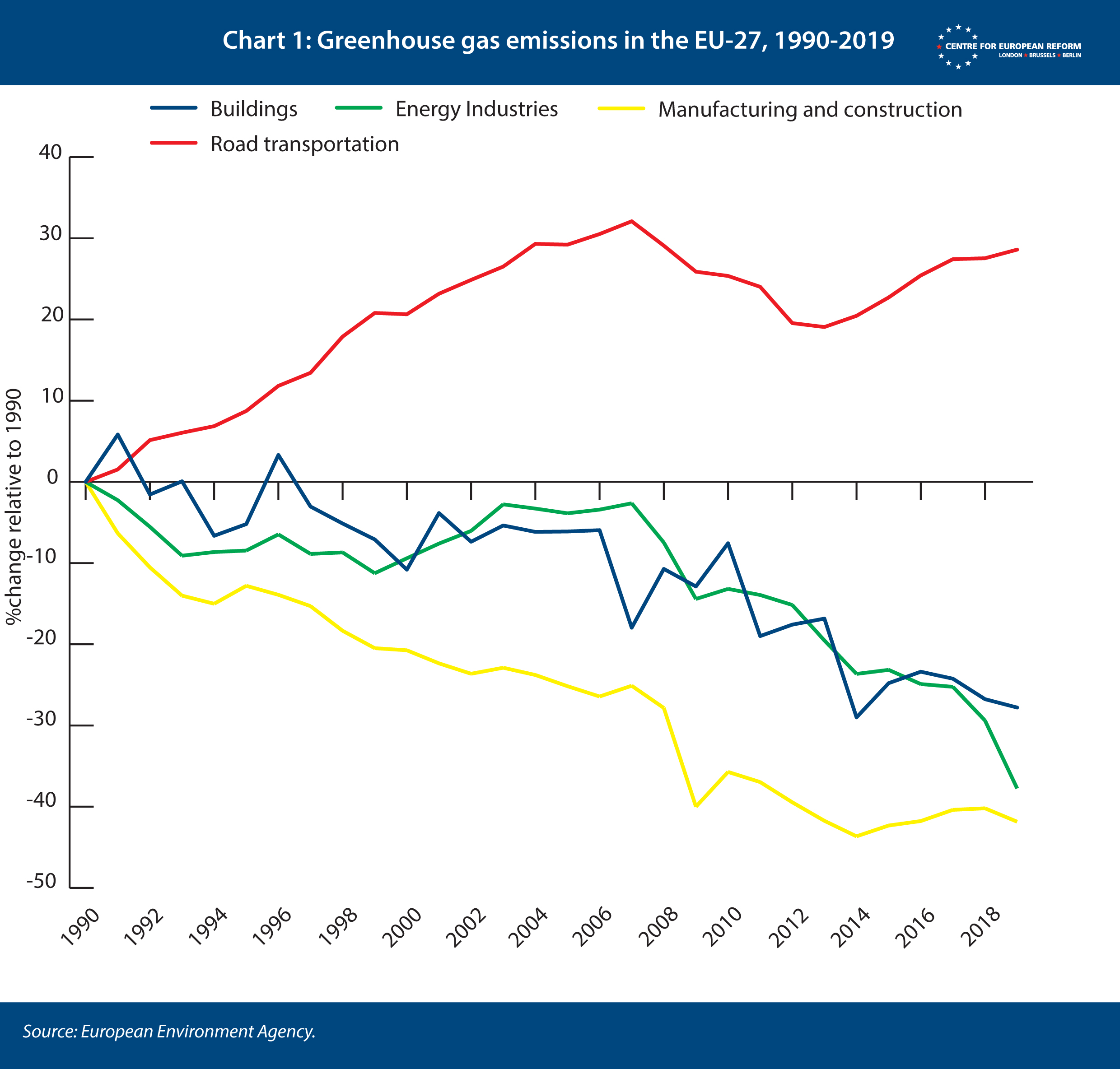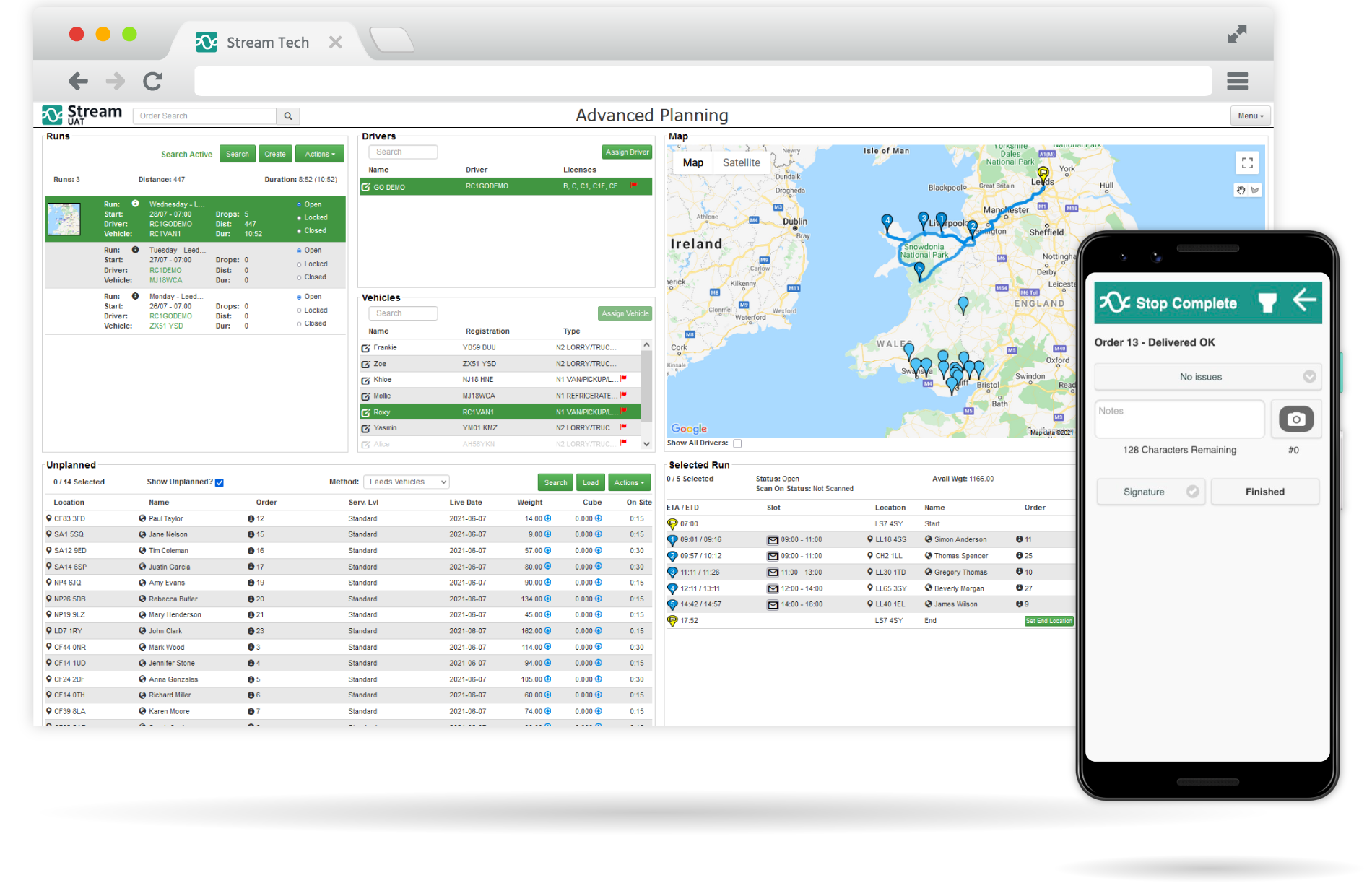Today (Tuesday 17 May) Members of the European Parliament’s Environment Committee will vote to extend the existing European Union Emission Trading System to include buildings and road transport via the ‘Fit for 55’ programme.
The ‘Fit for 55’ programme includes a set of policy proposals that update EU legislation and implement new climate initiatives – providing a coherent and balanced framework for reaching the long-term EU’s climate objectives.
In 2005, the EU introduced into legislation the Emission Trading System (ETS), a market mechanism that gives CO2 a price (referred to as a ‘carbon pricing system’) and creates incentives to reduce emissions in cost-effective ways.
Since the ETS was introduced to industry sectors (energy, manufacturing and aviation) covered by emissions trading, emissions have been cut by around 43%.
The effectiveness of the ETS in curbing greenhouse gas emissions is illustrated in the graph below, and highlights the need for legislative action to help temper the continuing rise of road transport emissions.

Road transportation and building sectors which are, at the time of writing, currently not included in the ETS, account for around 25% and 15% of EU-wide greenhouse gas emissions.
ACEA encourages MEPS to vote in favour of ETS for road transport
The European Automobile Manufacturers’ Association (ACEA) has called on MEPs to support the ‘Fit for 55’ programme and ETS amendments, as they believe that an appropriately priced carbon system will encourage a broader market uptake of alternatively-powered vehicles.
“Only with the strong support of a policy framework that sets a price on carbon, will it be possible to encourage and incentivise commercial transport operators to choose low- and zero-emission vehicles over conventional, diesel-powered ones.” – Martin Lundstedt, CEO of Volvo Group & Chairperson of ACEA’s Commercial Vehicle Board.
It would be a significant policy tool for decarbonising road transport, and would form a key part of the European Commission’s proposals to make the EU’s transport policies fit for reducing net greenhouse gas emissions by at least 55% by 2030.
This underpins the EU’s wider ambitions to become the first continent to achieve climate neutrality by 2050.
Increasing online spending is having an impact on our environment
The COVID-19 pandemic has had a significant and permanent impact on consumer behaviour.
Research conducted by Credit Karma in 2021 found that 70% of Britons now prefer shopping online, and on mobile, over their brick and mortar counterparts, which is double the pre-pandemic percentage.
It became evident throughout the pandemic just how over reliant we have become on home delivery services, and this increase in online demand (global retail ecommerce sales grew by 27.6% in 2020) inevitably results in more delivery vehicles on the road.
The World Economic Forum’s report ‘The Future of the Last-Mile Ecosystem’ forecasted that, by 2030, the number of delivery vehicles in cities worldwide will increase by 36%, leading to a 32% rise in emissions and 21% increase in congestion.
This has a huge impact on greenhouse gas emissions and provides evidence that supports the amendment of the EU’s ETS to include road transport and incentivise commercial transport operators to opt for eco-friendly vehicles.
Associations such as the British Retail Consortium (BRC) have set a climate action road map to hold businesses to pledges that improve their sustainability and reduce their carbon footprint to offset the rise in demand for delivered goods.
Stream provides a variety of solutions to help reduce a businesses carbon footprint.
How can Stream help businesses reduce their carbon footprint?
Route planning & optimisation
Optimising your delivery process is an effective way to reduce your carbon footprint.
Stream uses map-based planning to intelligently optimise delivery (and indeed collection) routes, improve efficiency, reduce mileage and streamline your logistics operation.
You can also plan delivery and collection routes which take into account all locations, total route times and vehicle capabilities (such as capacity, weight, cube etc), to quickly make the most of your resources whilst minimising your impact on the environment.

Vehicles with alternative drivetrains pose some unique routing challenges.
With Stream, transport planners can take vehicle range limits into account, ensuring their vehicles can complete scheduled deliveries & collections without running out of charge on the road.
There’s also a 50% discount on Stream subscriptions for electric vehicles, cargo bikes and other vehicles with alternative drivetrains.
Reduce the number of re-deliveries
Failed deliveries add unwanted extra mileage to the delivery process and are an inconvenience for the customer.
Stream gives your customers and partners complete visibility over their orders, allowing you to proactively engage your customers and manage any issues on the day of delivery and avoid the need for re-deliveries and excess mileage.
Automated two-way communication by email and SMS means everyone has access to the right information at the right time.
Delivery slots, order information, updated ETAs & order tracking keeps everyone informed at every step of the process, safeguarding against logistical errors and the risk of adding unwanted mileage through re-delivery or customer collection.








